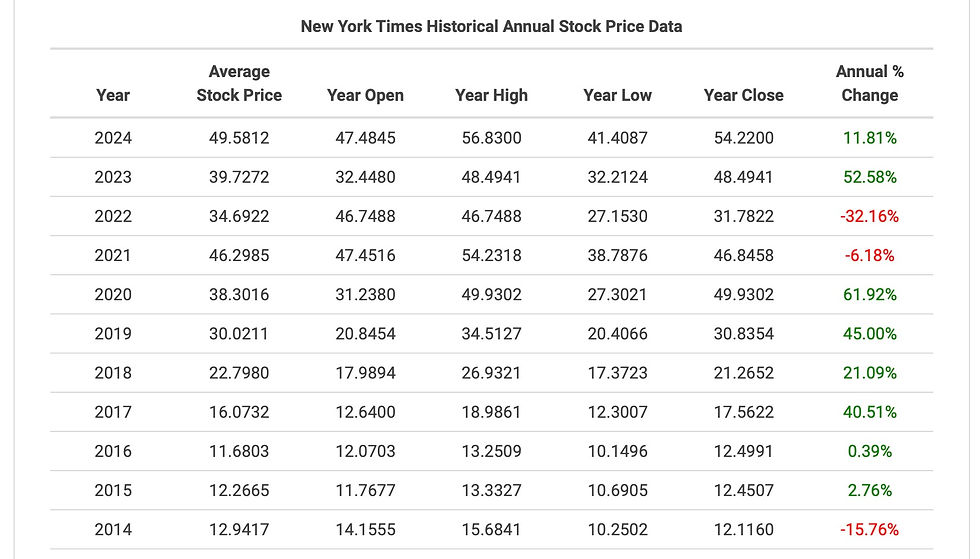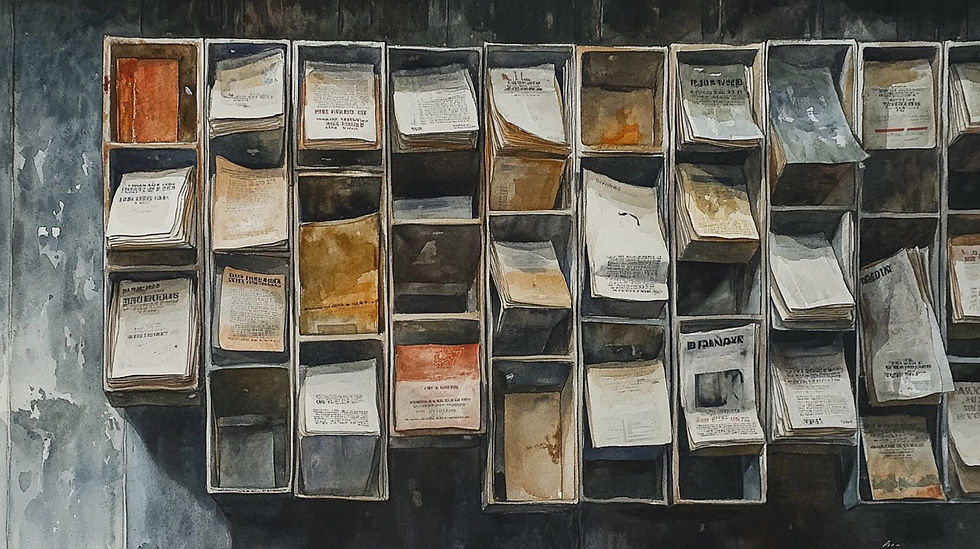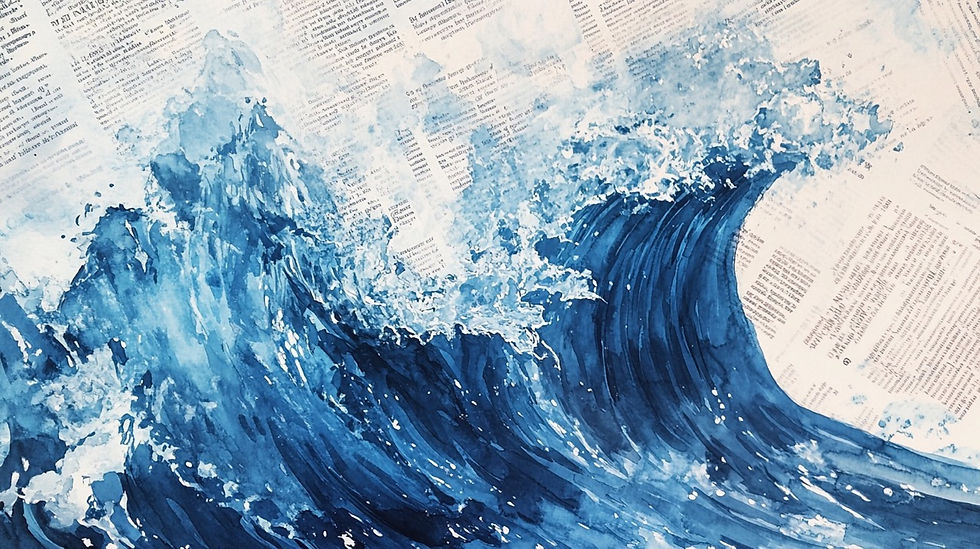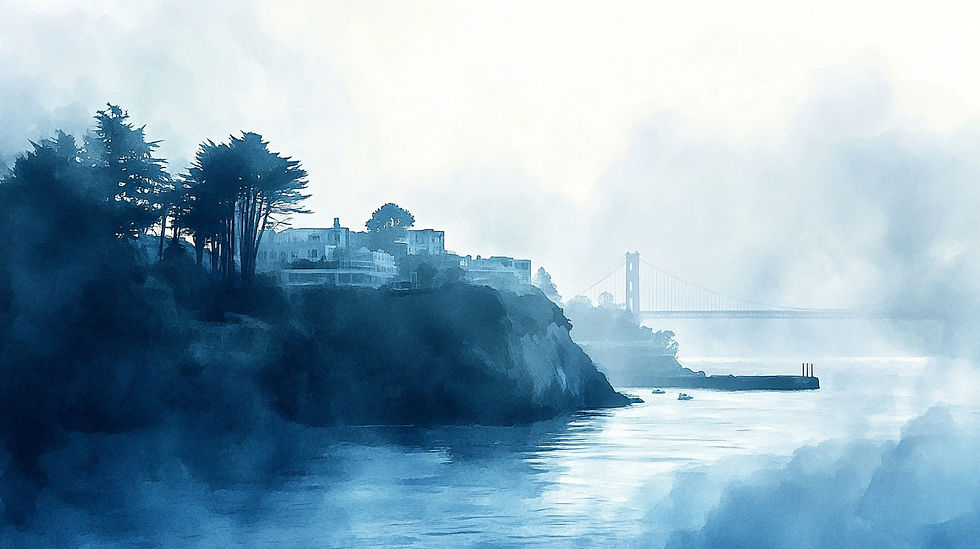The Blue Washing of America
- Gael MacLean

- Nov 23, 2024
- 6 min read
How the liberal media helped elect Donald Trump

In 1996, the year the Telecommunications Act reshaped American media like a surgeon’s knife, I was in New York, watching the scaffolding of empire rise around us all. Rupert Murdoch moved through Manhattan that year like a man who knew something the rest of us did not. Perhaps he did. The legislation landed on Bill Clinton’s desk with the weight of inevitability, and when he signed it, something shifted in the American consciousness, though we wouldn’t name it for years to come.
At a 2019 talk on her book tour for Fascism: A Warning, Madeleine Albright leaned towards the mic, her voice low but urgent: ‘This is how democracy dies.’ Not with a revolution, but with the quiet acquiescence of those who should know better. The liberal media, she suggested, had become like someone watching a house fire from across the street, meticulously documenting the flames while forgetting to call the fire department.
I remember driving through Malibu in 2015, past houses that would later burn, a story I came to know intimately producing Robert Kerbeck’s audiobook, Malibu Burning. On the radio, media analysts predicted Trump’s campaign would collapse under the weight of its own absurdity. The Pacific stretched out endless and blue, indifferent to our certainties. By then I had lived long enough to know that certainty is often just another word for blindness.
The numbers would later tell the story we refused to see: between June 2015 and November 2016, Trump received $5.6 billion in free media coverage, more than Hillary Clinton, Bernie Sanders, and Ted Cruz combined. The “liberal” networks, entranced by their own ratings, became unwitting amplifiers of the very chaos they claimed to deplore.
There’s a peculiar quality to California light in late afternoon — it renders everything simultaneously sharp and somehow unreal. That’s how I think of social media’s effect on our political discourse. A 2024 Pew Research study would reveal that 54% of Americans now get their news through social media platforms, where algorithms favor outrage over accuracy. Traditional media, trying to compete with this digital wildfire, found themselves amplifying the very flames they should have been fighting. This shift hasn’t just changed how news is consumed — it’s transformed how it’s produced.
At my local coffee shop in North Beach where I sometimes winter and write these days, I overheard two young journalists discussing their Twitter (X) metrics. “Nuance doesn’t get retweets,” one said, scrolling through her phone. The other nodded, adding, “Balance has become journalism’s fig leaf — a polite fiction we maintain while truth bleeds out in real-time.” They spoke the language of their profession, but their words carried the weight of surrender.
The mathematics of media ownership have always been simple: Whoever owns the medium owns the message. In the years since Trump’s first campaign, this equation has grown more complex, but no less true.
According to analysis of data from 208 million US citizens, which Meta allowed a team of academics to access, 97% of fake news is seen by right-wing users. The liberal press, rather than confronting this digital distortion, chose to report on it with the detached fascination of naturalists observing some exotic species of political decay.
The spread of misinformation through social networks has become a defining challenge of our era. As MIT scholars Deb Roy and Soroush Vosoughi discovered, false news stories spread 70% more widely than the truth, reaching audiences six times faster across social platforms.
“Twitter became our main source of news,” Vosoughi explains, “but I realized that a good chunk of what I was reading on social media was rumors; it was false news.”
Their conclusion was deceptively simple.
“Think before you retweet.”
Yet in the rush to capture audience attention, even established media outlets often amplify rather than investigate viral content.
I keep returning to something my documentary instructor at film school told me: ‘If something stinks, follow the money.’ The bluewashing of America isn’t just intellectual negligence — it’s a business model. During Trump’s first term, The New York Times watched its stock price surge 62%. Rage, it turns out, is profitable. Fear sells subscriptions. Hopelessness keeps viewers glued to their screens, waiting for the next apocalyptic alert.

When Trump suggested injecting disinfectant during a pandemic briefing in April 2020, I was in my sister’s garden in Berkeley, watching hummingbirds wage their tiny territorial wars. The liberal media dutifully reported his words, analyzed them, fact-checked them, while missing the larger story: that truth itself was being cleaned away, sanitized, blue washed into palatability.
Numbers have a way of whispering what headlines won’t shout. In 2016, Trump’s electoral victory came down to merely 77,744 votes spread across three states. The 2020 margins were similarly thin: 124,578 votes across three states carried Biden to victory.
By 2024, headlines screamed inevitability while burying the arithmetic of possibility in paragraph twenty-two. Only 780,000 votes separated the two candidates in all swing states combined. This is how hopelessness is manufactured: not through lies, but through selective emphasis.

Consider the contrast: In 1974, when the Watergate story broke, it took months of methodical reporting to build the case that would eventually bring down a president. In 2024, we are drowning in evidence but starving for conviction. The liberal media’s response to Trump’s assaults on democratic norms has been to retreat into what I call “the comforting math of moral superiority.”
Yet truth persists, if you know where to look for it. Online I subscribe to three independent newsletters run by journalists who left mainstream outlets to pursue stories that wouldn’t fit into the algorithm of outrage. At the Missouri School of Journalism, the Center for Investigative Reporting has spent decades following paper trails that corporate media won’t touch. Their stories don’t trend on Twitter, but they change policies, expose corruption, save lives.
A 2024 Pew Research study showed that Americans’ trust in media has fallen so far that 75% believe social media companies intentionally censor political viewpoints, while traditional news sources scramble for relevance in an ecosystem that rewards outrage over investigation.
Since 2004, California alone has lost 42% of its local newspapers. Each closure represents not just the loss of jobs, but the loss of a way of seeing, of understanding, of knowing what truth looks like when it’s rooted in place rather than floating in the digital ether.
Not long ago, I drove down the coast from San Francisco to Los Angeles, past beaches where I used to swim. The Pacific was still there, eternal and indifferent. At a gas station in Big Sur, I watched teenagers scrolling through TikTok news feeds, their faces bathed in blue light. The scene felt like a metaphor for something I couldn’t quite articulate — about information, about truth, about the way we consume reality in bite-sized pieces now.

The Pacific teaches us something about persistence. Standing on Baker Beach in San Francisco, watching waves assault the shore, I thought about how water doesn’t just crash — it erodes, it seeps, it finds the cracks in seemingly impenetrable surfaces. Truth works the same way.
The truth about America’s bluewashing isn’t just about what the liberal media did — it’s about what they failed to do. While they were writing thoughtful analyses about the death of truth, they missed the story of how truth dies: not through direct assault, but through dilution, distraction, and the soft corruption of intellectual complacency.
The journalists I admire most now aren’t the ones with the biggest platforms or the blue checkmarks. They’re the ones who understand that truth isn’t just something you speak — it’s something you shout, something you demonstrate, something you prove with the patient accumulation of facts and the impatient insistence on accountability.
Two years. That’s what we have to turn this around. Not through the comfortable resignation that has characterized too much of liberal media, but through the kind of journalism that made me want to be a journalist in the first place: fierce, fearless, and unwilling to accept the convenient narrative of inevitable defeat.

In San Francisco where I once lived, there used to be a saying: “The fog comes on little cat feet.” So too does the erosion of democratic norms, the collapse of shared reality. The liberal media’s greatest sin wasn’t that they reported badly — it’s that they reported safely, predictably, like horses wearing blinders, seeing only what was directly ahead while missing the wider catastrophe unfolding in their peripheral vision.
Last night, driving through Missoula, I passed a small weekly newspaper office. The lights were still on at 11 PM, and through the window I could see a young reporter hunched over her desk. She reminded me of something essential: that journalism, at its best, isn’t just about reporting what happened — it’s about showing what’s possible. The bluewashing of America isn’t inevitable. Neither is our silence in the face of it.
But fog also lifts, revealing what was there all along: the possibility of change, the persistence of truth, the power of voices raised not in comfort, but in conviction.
Images by Gael MacLean ©2024




